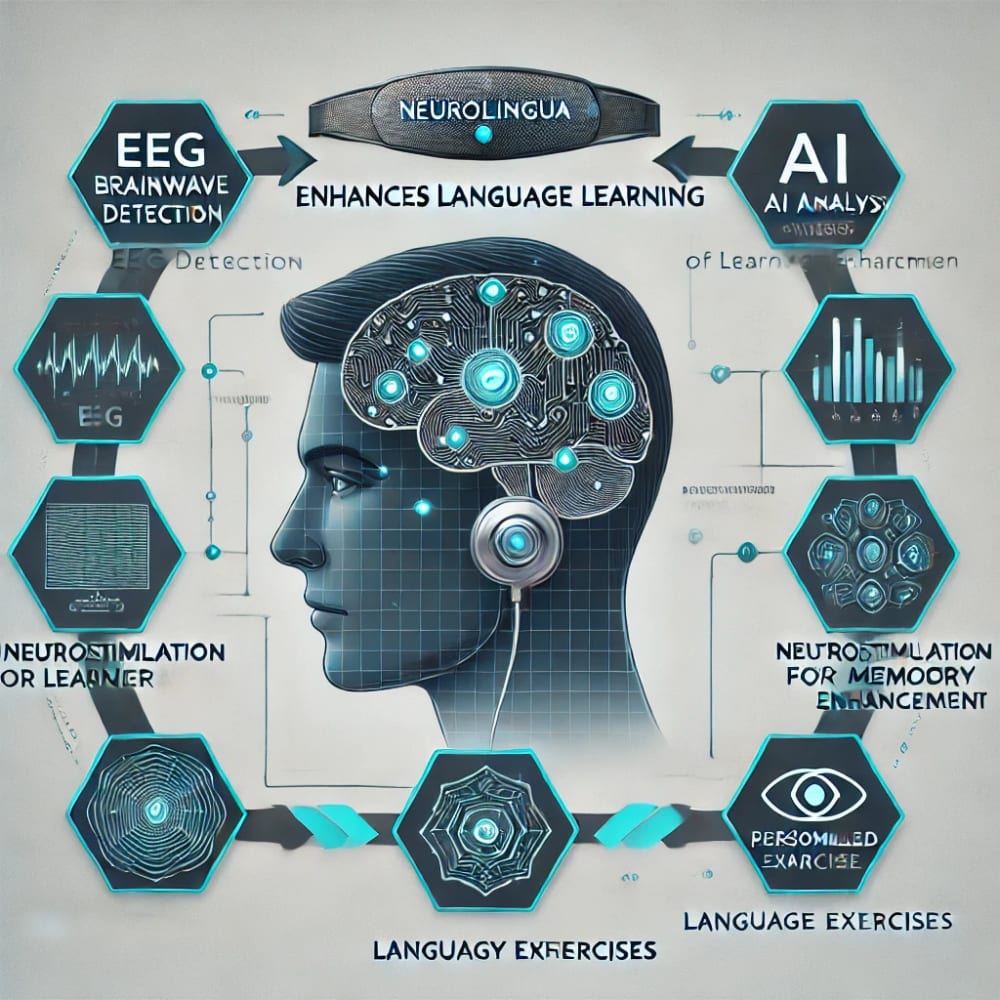Introduction: NeuroLingua is an AI-powered headband utilizing EEG, neurostimulation, and machine learning to enhance and accelerate language acquisition.
Core Technology
- EEG Sensors – Monitor brain activity.
- AI Analysis – Detects learning patterns.
- Neurostimulation – Boosts memory retention.
- Personalized Training – Adapts exercises to users.
Key Features
- Lightweight ergonomic design
- Wireless Sync via Bluetooth/Wi-Fi
- 8-10 hours battery per charge
- Mobile App Integration
Scientific Validation
- EEG neurofeedback enhances learning by 35% (Gruzelier, 2014).
- tDCS stimulation speeds up language acquisition by 40% (Flöel, 2018).
- AI learning systems improve retention rates by 25-60% (Plass & Pawar, 2020).
Competitive Edge
- First AI-integrated neurostimulation language device
- 30-50% faster language learning
- No direct competitors
Evaluation Criteria Alignment
NeuroLingua is the first AI-integrated neurostimulation device for language learning, utilizing cutting-edge neuroscience and machine learning. It significantly improves traditional learning methods by providing real-time brain activity analysis and adaptive training, setting it apart from any existing solutions.
The device is designed with proven neurotechnology components such as EEG sensors and tDCS stimulators, which are already in use for cognitive enhancement. The cost-efficient production ensures scalability, and its compact, wearable design makes it practical for daily use.
There is a growing demand for language learning solutions, with a market value expected to reach $30 billion by 2028. NeuroLingua directly appeals to students, professionals, and travelers, offering a unique, scientifically validated approach that outperforms conventional methods.
Applications
- Students – Faster learning
- Professionals – Improved communication
- Travelers – Quick adaptation
- Institutes – Advanced training solutions
Illustrations
- Device Rendering – Ergonomic design
- Labeled Diagram – Sensor & AI functions
- Flowchart – Learning acceleration process
Like this entry?
-
About the Entrant
- Name:Aziza Absalomova
- Type of entry:individual
- Software used for this entry:AutoCAD, MATLAB, and Python were used for modeling and simulation. Additionally, Adobe Illustrator was utilized for visualization.
- Patent status:none









